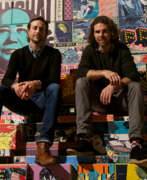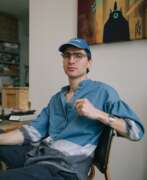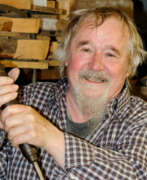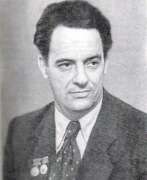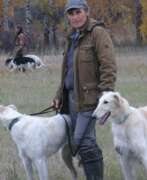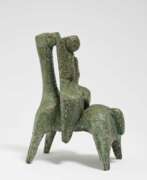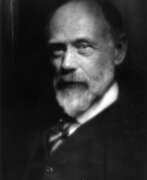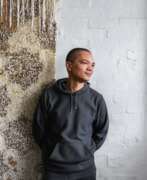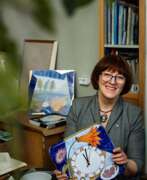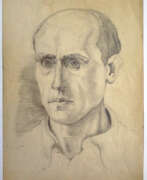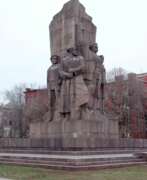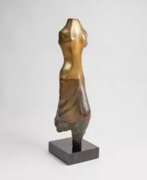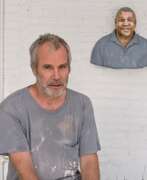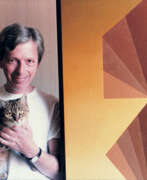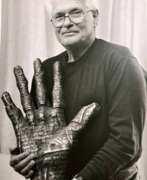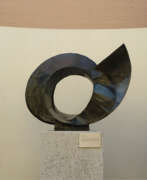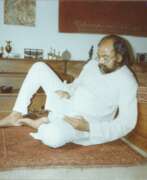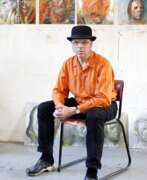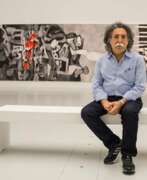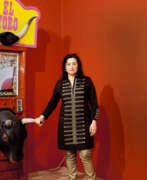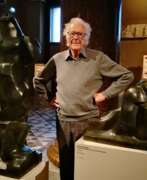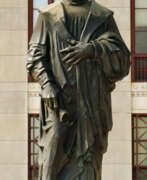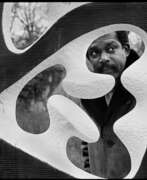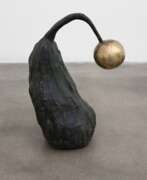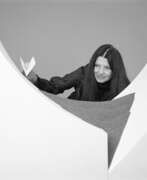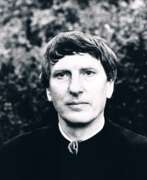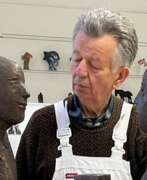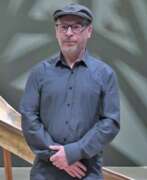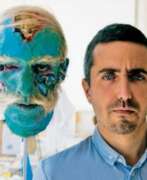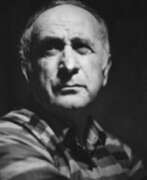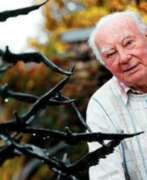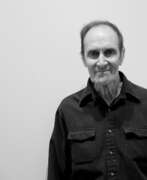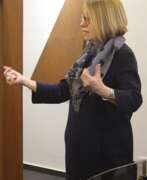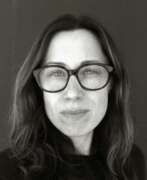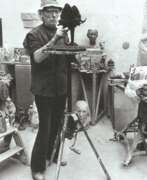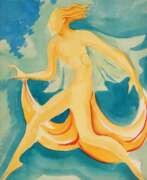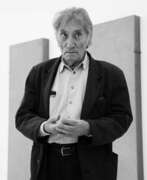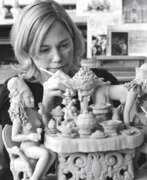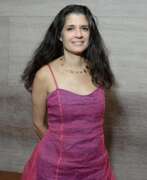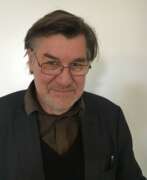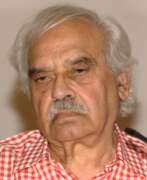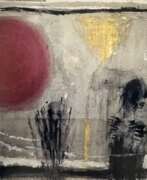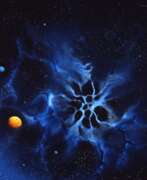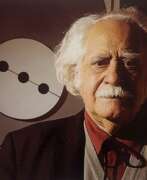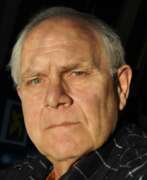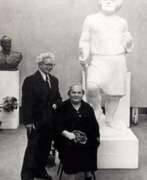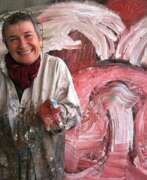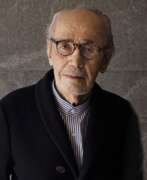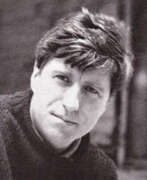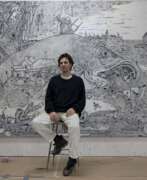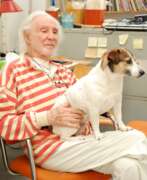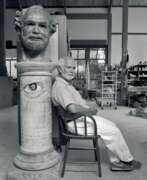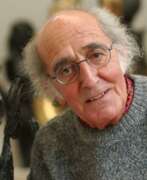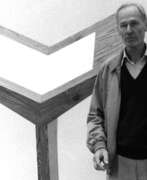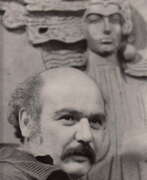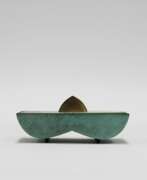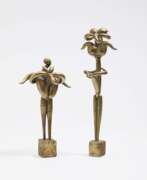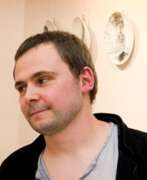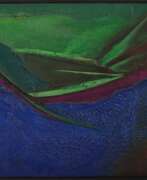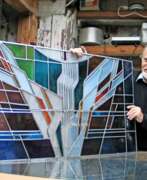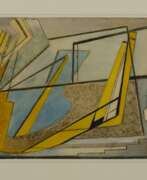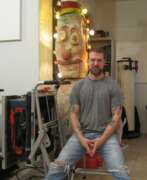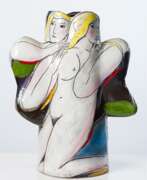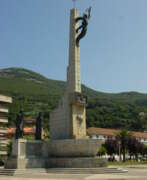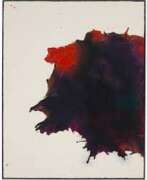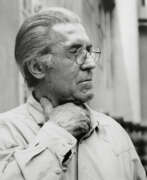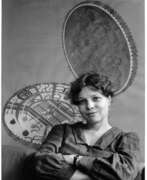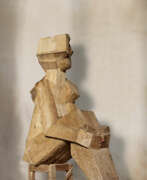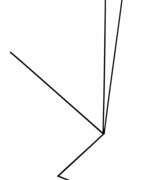Sculptors Contemporary art
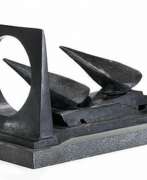

Jan Leth Aagensen was a Danish artist. He made his name as a lithographer and later became known for his sculptures.
Jan Leth's formal training took place at the Royal Danish Academy of Fine Arts under Professor Søren Hjort Nielsen from 1965 to 1969. His first exhibition took place in 1961 at Kunstnernes Forårudstilling (Spring Artists' Exhibition). He is a member of various art groups: Decembristerne, Kunstnersamfundet og Foreningen Danske Grafikere, the Association of the Royal Danish Academy of Fine Arts and the Association of Danish Painters Engravers.
Jan Leth has participated in various solo and group exhibitions, presenting paintings, sculptures, drawings, and installations in Denmark and abroad. He has received many honours and grants throughout his life. The Danish State gave him a lifelong economic grant in 1998. His work is represented in gallery collections in Denmark and internationally.
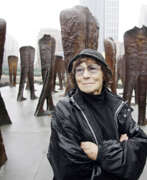

Magdalena Abakanowicz was a distinguished Polish artist, celebrated for her innovative use of textiles as a sculptural medium. Born on June 20, 1930, in Falenty, Poland, and passing away on April 20, 2017, in Warsaw, she carved out a significant place in the art world with her unique artistic expressions that often explored themes of crowd behavior, the trauma of war, and the individuality of the human condition.
Abakanowicz's education at the Academy of Fine Arts in Warsaw was a period of both artistic and personal growth, shaping her future works. During the 1960s, she began creating the "Abakans," large-scale textile sculptures that challenged conventional forms and expressed dynamic movement and vivid emotion. Her works often featured organic, tactile materials like burlap, resin, and wood, which added a profound depth and rawness to her sculptures.
Her sculptures are well-represented in major public installations and collections worldwide, including the National Museum in Wrocław, Poland, Grant Park in Chicago, and the National Gallery of Art Sculpture Garden in Washington, D.C. These pieces are not just art forms but are experiences, inviting viewers to explore deeper psychological and existential themes.
For those captivated by the profound impact and the stirring beauty of Magdalena Abakanowicz's work, subscribing for updates can provide regular insights and information on exhibitions and sales of her works at auctions. This is an excellent way to stay connected with the legacy of an artist who continuously redefined the boundaries of sculpture and installation art.
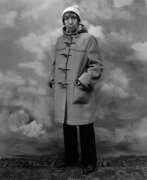

Berenice Alice Abbott was an American photographer best known for her portraits of between-the-wars 20th century cultural figures, New York City photographs of architecture and urban design of the 1930s, and science interpretation in the 1940s to 1960s.
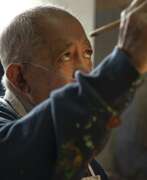

Gilberto Aceves Navarro was a Mexican painter and sculptor and a professor at the Escuela Nacional de Artes Plásticas and Academy of San Carlos. There have been more than two hundred individual exhibits of his work, with his murals found in Mexico, Japan and the United States. He received numerous awards for his work including grants as a Creador Artístico of the Sistema Nacional de Creadores de Arte, Premio Nacional de Ciencias y Artes and Bellas Artes Medal from the Instituto Nacional de Bellas Artes.
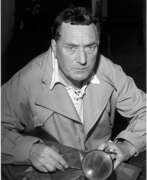

Henri-Georges Adam was a French engraver and non-figurative sculptor of the École de Paris, who was also involved in the creation of numerous monumental tapestries. His work in these three areas is regarded as among the most extensive of the twentieth century.
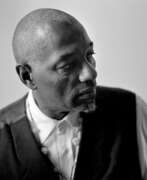

Terry Roger Adkins was an American artist. He was Professor of Fine Arts in the School of Design at the University of Pennsylvania.
Adkins was an interdisciplinary artist whose practice included sculpture, performance, video, and photography. His artworks were often inspired by, dedicated to, or referred to musicians or musical instruments; specific installations and exhibitions were sometimes labeled "recitals." Sometimes, these arrangements of sculptures were "activated" in performances by Adkins' collaborative performance group, the Lone Wolf Recital Corps.
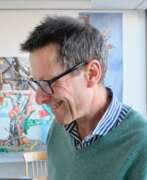

Urs Aeschbach is a Swiss media artist working in various techniques. Nature is always a pictorial theme in Urs Aeschbach's paintings. Her main characters are mushrooms, woody plants, animals, jellyfish, as well as dogs and horses. The artist's paintings are inspired by photographs and illustrations. In addition to paintings, Eschbach creates art and construction projects, video works, as well as constructions and installations.
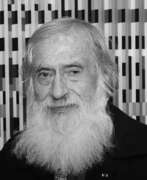

Yaacov Agam, an Israeli kinetic and optical artist born on May 11, 1928, is celebrated for revolutionizing the visual arts with his dynamic and interactive creations. Agam's pioneering work extends beyond traditional static art forms, inviting viewers into a transformative experience that changes with perspective and movement. His art, deeply rooted in his Jewish heritage and mysticism, eschews representational imagery for abstract, geometric forms and vibrant colors, engaging the observer's perception to complete the visual experience.
Notably, Agam's contributions to kinetic art have not only garnered him international acclaim but also led to his works commanding the highest prices among Israeli artists at auction. His innovative "Agamographs" use lenticular printing to create illusions of depth and motion, highlighting his fascination with the interplay between art, viewer, and the temporal dimension. Agam's significant exhibitions include retrospectives at the Musée National d'Art Moderne in Paris and the Guggenheim Museum in New York. His achievements are further recognized through multiple awards and the establishment of the Yaacov Agam Museum of Art in his hometown of Rishon LeZion, Israel, dedicated to his vision of art in motion.
For collectors and art and antiques experts, Agam's work represents a profound exploration of perception, time, and spirituality, offering a unique and engaging experience. His art invites us to see beyond the visible, reminding us of the ever-changing nature of reality and our active role in its perception. To stay updated on new product sales and auction events related to Yaacov Agam, sign up for updates and immerse yourself in the dynamic world of one of the most influential modern artists.
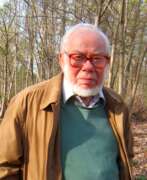

Wolfram Aïchele was an artist from Baden-Württemberg in Southern Germany, son of renowned animal artist Erwin Aichele. After training as a sculptor, he studied religious and Byzantine art, drawing inspiration from his pilgrimage to Serbia, Kosovo, Macedonia, and Mount Athos. Aïchele focused on painting icons using egg tempera, aiming to revive the pure iconographical style corrupted in the 19th century. He later moved to Paris, where he explored various influences such as Eastern European folk art, Persian miniatures, and modern artists like Chagall and Klee. Aïchele's work transitioned to a unique blend of figurative and abstract art, primarily expressed through watercolors and painted collages.
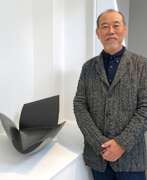

Yō Akiyama (秋山 陽) is a Japanese ceramicist based in Kyoto. He was a late leading figure of Sōdeisha, a twentieth-century avant-garde artist group that sought to redefine understandings of aesthetics and purpose in modern and contemporary ceramics, focusing on sculptural attributes over strict functionality. Akiyama studied directly under Kazuo Yagi, one of the founders of Sōdeisha, for six years. Akiyama later became a professor at Kyoto Municipal University of Arts and Music, where he is currently a Professor Emeritus, having retired in 2018. As an artist, he works primarily with black pottery, a technique that fires clay in low temp, smoky conditions to create a dark effect. His predominantly largescale work is richly textural and abstract, emphasizing the earthy materiality of the work as well as its form.
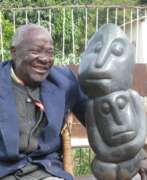

Fanizani Akuda is a self-taught sculptor from Zimbabwe, born in Zambia.
He was working as a stonemason in a quarry when he got his hands on a tool and created his first stone sculpture. With his own unique style, Fanizani was able to convey human emotion in stone with talent. His work can be recognized by the slitted eyes, rounded shapes, cheerful and smiling faces, and his themes are also happy families, human and animal interactions, often in pairs or groups. Fanizani also liked to carve whistle sculptures.
Thanks to Fanizani and his unique stone sculptures, Zimbabwe is internationally recognized today.
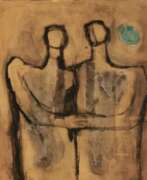

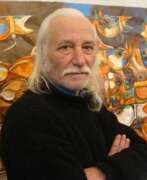

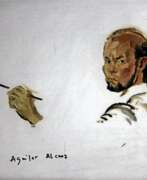

Frederico Aguilar Alcuaz is a Filipino abstract painter, sculptor and ceramist, and master tapestry artist.
He studied painting at the University of the Philippines' School of Fine Arts, then lived and worked both in the Philippines and Spain, and in Brno, Czech Republic, he worked extensively on tapestries.
Alcuaz has earned international acclaim with his vivid abstract works in various genres and techniques, and he has exhibited extensively internationally.
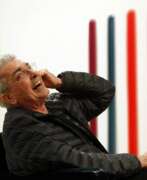

Peter Alexander was an American artist who was part of the Light and Space artistic movement in southern California in the 1960s. He is notable for his resin sculptures from the 1960s and 1970s. He studied architecture in England before receiving both his BFA and MFA from the University of California, Los Angeles. Alexander started as an architect, before developing a reputation in the 1960s for creating his sculptures.
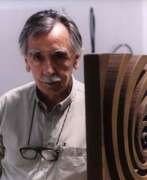

Andreu Alfaro Hernández was a Spanish sculptor.
Alfaro learned the principles of geometry and applied his knowledge to create abstract works. His sculptures are usually full of nuances that play with the module, the series and light and color. He was also described as a minimalist artist, albeit with reservations.
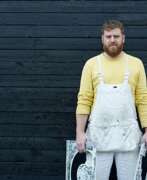

Darren James Almond is an English artist, based in London. He was nominated for the 2005 Turner Prize. He works in a variety of media including photography and film, which he uses to explore the effects of time on the individual.[3] He uses "sculpture, film and photography to produce work that harnesses the symbolic and emotional potential of objects, places and situations, producing works which have universal as well as personal resonances"
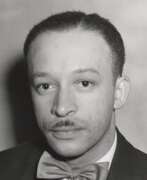

Charles Henry Alston was a mid-twentieth-century American artist. He is known as a graphic and muralist painter as well as a sculptor, illustrator, and educator who lived and worked in New York City's Harlem neighborhood.
Charles Alston was an activist in the so-called "Harlem Renaissance." He became the first African-American director of the U.S. Federal Art Project. The artist created murals for Harlem Hospital as well as a number of cultural and administrative buildings in New York City. Alston is the author of a bust of Martin Luther King, Jr. which was the first depiction of an African American to be displayed at the White House in Washington, DC.
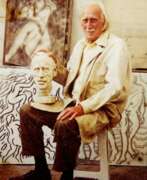

Harold Ambellan is an American painter and sculptor.
He studied sculpture and fine art in Buffalo before moving to New York City. The human figure is central to Harold Ambellan's work. He created monumental figures and drew extensively, leaving thousands of drawings. Ambellan was one of the participants in Roosevelt's Federal Art Project, which hired hundreds of artists during the Great Depression who collectively created more than 100,000 paintings and over 18,000 sculptures.
Ambellan remained committed to figuration in both his sculpture and painting. He was elected president of the Sculptors Guild of America in 1941, and that same year his work was exhibited in group shows at the Metropolitan Museum of Art in New York and the Academy of Fine Arts in Philadelphia.
In 1944, Ambellan participated in the liberation of Normandy as part of the U.S. Navy, then taught three-dimensional art at the Workshop School in New York City. In 1954, for political reasons, Ambellan moved to France and remained there for the rest of his life, working and exhibiting throughout Europe.
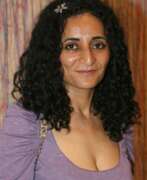

Ghada Amer (Arabic غادة عامر) is a contemporary artist, much of her work deals with issues of gender and sexuality. Her most notable body of work involves highly layered embroidered paintings of women's bodies referencing pornographic imagery.
Amer had previously emigrated from Egypt to France at the age of 11 and was educated in Paris and Nice. She is currently living and working in New York City.
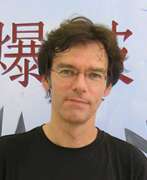

Andreas Amrhein is a contemporary german artist. His first verified exhibition was Arbeiten auf Papier „Blau“ at Galerie Michael Schultz in Berlin in 1994. Andreas Amrhein is most frequently exhibited in Germany, but also had exhibitions in Austria, China and elsewhere.
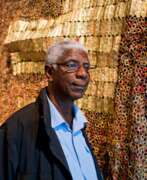

El Anatsui, a Ghanaian sculptor born on February 4, 1944, has carved a niche for himself with his iconic bottle-top installations. His artistry bridges his Ghanaian roots and his career in Nigeria, drawing international acclaim for its innovative use of everyday materials. Anatsui's large-scale metal tapestries, meticulously assembled from discarded bottle caps and copper wire, reflect a lifetime of exploring local materials and craftsmanship.
A citizen of the Ewe Nation, El Anatsui's lineage is entwined with art; he is the son of a master weaver of Kente cloth. This heritage shines through in his work, as does his formal art training from Kwame Nkrumah University of Science and Technology in Kumasi, Ghana. Anatsui's sculptures are not just art pieces but narratives woven from wood, metal, and clay, each piece shimmering with a story.
Anatsui's installations are a testament to his transformative vision, repurposing simple materials into mutable sculptures that resonate with a global audience. His works, often featured in prestigious museums and galleries, are more than sculptures; they are dialogues in sustainability and culture, inviting viewers to unravel the layers of meaning within.
For collectors, auctioneers, and art connoisseurs, El Anatsui's works are a blend of history, innovation, and artistry, making them significant additions to any collection. To stay updated on the latest from El Anatsui and his mesmerizing creations, sign up for our newsletter.
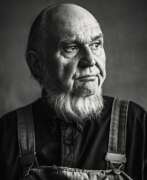
Carl Andre is an American minimalist artist known for his sculptural works made of industrial materials such as metal plates, bricks, and concrete blocks. He was a key figure in the Minimalist art movement of the 1960s and 1970s, which emphasized the use of simplified forms and materials.
In the 1960s, Andre began creating his signature floor sculptures, which consisted of standardized units of metal, wood, or other materials arranged in simple geometric patterns directly on the ground. His work was often controversial, as many critics saw it as overly simplistic or even nihilistic. However, Andre's sculptures were also celebrated for their understated beauty and their ability to challenge traditional notions of art and sculpture.
Throughout his career, Andre has exhibited his work in major museums and galleries around the world. Andre continues to live and work in New York City, where he remains an influential figure in the art world.


Constantine Andreou (Greek Κωνσταντίνος Ανδρέου; Portuguese: Constantine Andreou) is a Greek artist and sculptor of Brazilian origin who had a very successful career for six decades. Many have praised Andreou as an outstanding figure in international art in the 20th century.
Constantin Andreou fought in the Greek army during World War II and joined the armed resistance after the occupation of Greece. After the war ended, Andreou received a scholarship from the French government in 1945 and moved to Paris. There, in 1947, he developed an innovative artistic technique in which he welded brass plates together for the first time. This technique allowed him to find new forms of expression in sculpture and made him an innovator of his time.
During his time in Paris, the artist worked for a time with Le Corbusier. Andreou's works were exhibited alongside those of famous artists such as Pablo Picasso, Henri Matisse and Max Ernst, which testifies to his outstanding artistic achievements.
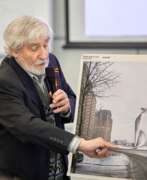

Valery Vladimirovich Androsov (Russian: Валерий Владимирович Андросов) is a Soviet and contemporary Russian artist. He is known as a sculptor, architect, designer, painter, graphic artist and teacher.
Valery Androsov creates landscapes, still lifes and portraits, as well as fantasy works. He is also known as the author of a large collection of ex-libris that accurately convey the character and interests of book owners. At different periods he served as chief artist of the Mosstroiplastmass Combine and director of the Mytishchi Picture Gallery. He also created monuments to those who died in the Great Patriotic War and to the pilots of the Mytishchi Aero Club, showing his skill in various artistic directions.
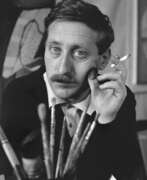

Horst Antes was a German painter, graphic artist and sculptor, a pioneer of the new figurative painting in Germany.
After studying at the Karlsruhe Academy of Fine Arts from 1957 to 1959, Antes taught there himself and later became a professor there.
Antes became known for the Kopffüßler (head-foot) image, which has been a recurring theme in his paintings, sculptures and graphic works since the early 1960s. Antes' work is represented in several major collections in Berlin, Hamburg, Cologne and elsewhere in Germany.
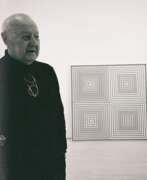

Richard Joseph Anuszkiewicz was a prominent American artist celebrated for his foundational contributions to the Op Art movement. Born in Erie, Pennsylvania, to Polish immigrant parents, Anuszkiewicz's early talent in art earned him scholarships, leading to his studies at the Cleveland Institute of Art and later, the Yale University School of Art and Architecture under Josef Albers. Albers, a pivotal figure in his career, inspired Anuszkiewicz to explore the intricacies of color and geometric forms, steering him away from realism towards a more abstract and mathematical approach to art.
Anuszkiewicz gained prominence in the 1960s, notably through his participation in the landmark exhibition "The Responsive Eye" at MoMA, which played a crucial role in propelling Op Art into mainstream recognition. His works, characterized by vibrant colors and geometric patterns, create illusions of depth and movement, challenging viewers' perceptions and offering a mesmerizing visual experience. His technique was not just about the visual impact; it was a meticulous, mathematical exploration of color and form, aiming to achieve a 'very, very mechanistic geometry' that was nonetheless romantic in its precision and purity.
Throughout his career, Anuszkiewicz's art evolved, yet he remained faithful to his intellectual and analytical approach, focusing on the optical effects of color and shape. His contributions extended beyond painting to include printmaking and sculpture, showcasing his versatility as an artist. Notably, his works are housed in prestigious collections around the world, including the Metropolitan Museum of Art, Museum of Modern Art, and the Whitney Museum of American Art, among others.
For collectors and experts in art and antiques, Anuszkiewicz's work embodies the confluence of scientific precision and artistic expression, offering insights into the profound impact of color and form on human perception. His legacy continues to inspire and challenge the boundaries of visual art.
If you're captivated by the transformative power of Op Art and the pioneering work of Richard Joseph Anuszkiewicz, sign up for updates. Stay informed about new product sales and auction events related to this remarkable artist's oeuvre, enriching your collection with pieces that resonate with history and innovation.
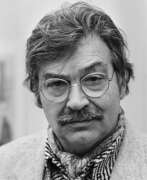

Christiaan Karel Appel was a Dutch painter, sculptor, and poet. He started painting at the age of fourteen and studied at the Rijksakademie in Amsterdam in the 1940s. He was one of the founders of the avant-garde movement CoBrA in 1948. He was also an avid sculptor and has had works featured in MoMA and other museums worldwide.
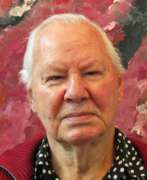

Armando, born Herman Dirk van Dodeweerd, was a Dutch painter, sculptor, poet, writer, violinist, actor, journalist, film, television and theater maker. Armando was his official name; his birth name, the pseudonym as he called it, no longer existed for him. He himself saw his work as «Gesamtkunstwerk», based on his experiences from the Second World War in the vicinity of Kamp Amersfoort.
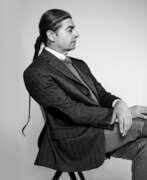

John Armleder is a Swiss performance artist, painter, sculptor, critic, and curator. His work is based on his involvement with Fluxus in the 1960s and 1970s, when he created performance art pieces, installations and collective art activities that were strongly influenced by John Cage. However, Armleder's position throughout his career has been to avoid associating his artistic practice with any type of manifesto.
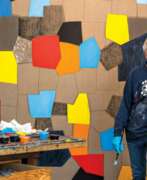

Charles Arnoldi is an American painter, sculptor and printmaker.
In the early 1970s, the artist attracted attention for his wall-relief wood sculptures, such as Honeymoons in the collection of the Honolulu Museum of Art.
The use of wood remained a feature of Arnoldi's oeuvre, although, since the 1980s, he has often employed it in combination with other media. In the 1990s, Arnoldi's output changed radically. He began producing abstract paintings on canvas, first black and white, and later brightly colored.
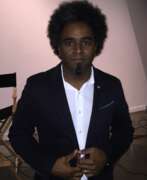

Alexandre Arrechea is a Cuban visual artist. His work involves concepts of power and its network of hierarchies, surveillance, control, prohibitions, and subjection.
For twelve years he was a member of the art collective Los Carpinteros, until he left the group in July 2003 to continue his career as a solo artist. His public art The spectator's participation in the work adds to his contemplation. The work arises out of human actions and reactions in the face of contemporary versions of the worldview already described by Jeremy Bentham in the 18th century. The eye of power watches everything and everyone, and everyone watches everyone else and themselves.
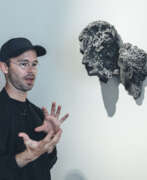

Daniel Arsham is an American artist and sculptor, co-founder and partner of the design firm Snarkitecture. Lives and works in New York. His projects include collaborations with James Franco, Hajime Sorayama, Merce Cunningham, Heidi Slimane and Pharrell Williams. He has also done commissions for brands such as Calvin Klein and Louis Vuitton.
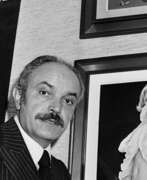

Aslan, real name Alain Gourdon, French artist, illustrator and sculptor. He is best known in France for his pin-up work. He studied at the Ecole Nationale des Beaux-Arts in Paris.
Aslan was also the author of busts and statues of many famous people (actors, politicians, singers). His works are often characterised by grace, courage and ardour. Aslan masterfully conveys the beauty and emotional depth of the female body, playing with lines, shapes and light. His compositions often evoke mixed feelings: they are both elegant and provocative, evoking a dialogue between eroticism and art.
Aslan's work has a surreal element to it, lending an air of mystery and singularity to his work. He combines reality and fantasy with ease, creating a world full of unpredictable and mystical images.
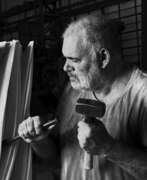

Pablo Atchugarry is a Uruguayan artist, best known for his abstract sculptural art. His works are included in many major collections, both private and public, and he has held more than one hundred solo and collective exhibitions worldwide.
For each sculpture, Atchugarry personally selects an appropriate block and is actively involved in carving it, with minimal help from assistants. He works with white Carrara marble from Tuscany, gray stone from Bardiglio, black from Belgium, and pink from Portugal. Aside from working with stone, he utilizes bronze finished in various patinas, ceramic, and, more rarely, various types of wood.
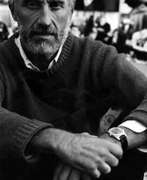

Ugo Attardi was an Italian painter, sculptor and writer. Attardi moved from Genoa to Rome in the early 1950s, where he formed the group Forma 1 together with other artists. His sculpture of Ulysses is now permanently installed in Battery Park in New York
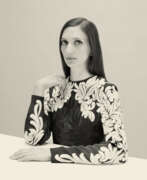

Tauba Auerbach is a visual artist working in many disciplines including painting, artists' books, sculpture and weaving. They live and work in New York.
A life-long student of math and physics, Auerbach's work contends with structure and connectivity on the microscopic to the universal scale.
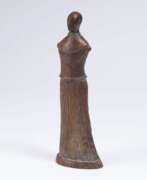

Edgar Augustin was a German painter and sculptor.
Augustin studied sculpture in Münster with Karl Ehlers, then was a pupil of the master Gustav Zeitz in Hamburg. His oeuvre includes partly abstract figurative representations in bronze, wood and plaster as well as paintings, drawings and graphics. Some of Edgar Augustine's sculptures are located in public spaces in Hamburg and other cities.
Edgar Augustin was a member of the Free Academy of Arts in Hamburg and the Special Association of Artists in Germany. In the second half of the 20th century, Augustin was one of the pioneers of figurative wood sculpture and is considered its most important representative.
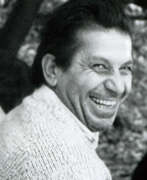

Robert Petrosovich Avakyan (Russian: Роберт Петросович Авакян) was a Soviet and Uzbek artist of the second half of the twentieth and early twenty-first centuries of Armenian origin. He is known as a painter, graphic artist, sculptor and teacher.
Robert Avakyan was trained in painting, but he is most famous as an author of monumental sculptures. He worked actively in Tashkent, participating in numerous exhibitions, including international sculpture competitions. The master also left his mark in such Uzbek cities as Bukhara, Nukus and Yangibazar, where he created significant monumental works.
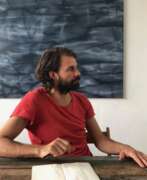

Janis Avotins is a Latvian artist, born in Riga in 1981. He was educated at the Latvian Academy of Art and the Royal College of Art in London. Avotins works in various media, including painting, drawing and sculpture, and his work is characterised by an experimental approach to form and technique. He has been recognised for his exhibitions in international galleries including Serpentin Galleries in London and the Venice Biennale.
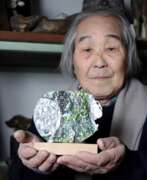

Kenjiro Adzuma (Japanese: 吾妻 兼治郎) is a Japanese abstraction sculptor known for his avant-garde and innovative approach to sculpture and installation art, one of Japan's most important post-World War II artists. He also lived and worked in Italy for many years. He studied sculpture at the Graduate School of Art at the University of Tokyo and at the Brera Academy of Fine Arts in Milan, where he attended Marino Marini's class.
Kenjiro Adzuma was a key figure in the Japanese art movement known as Mono-ha (School of Things) in the late 1960s and early 1970s. Mono-ha artists explored the relationship between natural and industrial materials, often juxtaposing them to create thought-provoking installations.
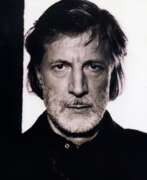

Hans Matthäus Bachmayer was a German expressionist painter and sculptor.
Bachmayer created large-format expressive paintings. His sculptures consist of individual pieces of wood glued together to form bizarrely shaped structures. The expressive colouring of the rough materials created an interesting tension between colour and form.


Donald Baechler was an American painter and sculptor associated with 1980s Neo-expressionism.
Baechler's artwork is in various permanent museum collections including at the Whitney Museum of American Art, the Museum of Modern Art, Solomon R. Guggenheim Museum, the Museum of Fine Arts Boston, the Stedelijk, and the Centre Pompidou.
